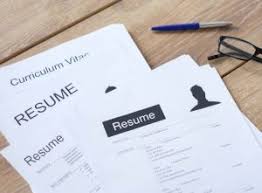What are the Standard ResumeTemplate and Format in Canada?

posted:3 years agobyAwatef Hamdiin CVs
Applying for a job is a challenging journey based on many requirements. Whatever are the demands, every recruitment process starts by submitting a resume/ CV that meets the job offer. In Canada, things might be a little different. What is unique about Canadian resumes? Here is an article to find out the differences.
How to Write a Resume Following the Canadian Norms?

Welcome to Canada! Writing a resume is not a simple task. Don't let professional opportunities escape you for not putting small efforts on your resume. It is essential to make a good impression by submitting a good resume. Applying for jobs in Canada requires certain conditions, the most important of which is a resume. This one must be designed in a particular way to respond to Canadian standards. Fratres will offer you this service of crafting your resume in the Canadian way, in line with all modern standards. So sign up to Fratres and don't miss any of its career advice.
How to Write a Resume?
Writing a resume should first fit the job requirements. A ready-made resume cannot be compatible with every application. That's why all the resume content needs to be updated in every application. Here are some tips on writing a good resume.
1.Choose a Template
Resume Templates bring life to your resume and make it look professional. They exhibit your info in the correct font and layout. Instead of using a plain Microsoft Word document, choose a template that highlights your contact information, professional summary, work experience, education/professional development, skills. This format proves its compatibility with Canadian standards. Proofread your resume to avoid grammatical errors.
2. Beware the quantity and length:
It's good to be generous, but not with Canadian resumes! Long paragraphs and small fonts are toxic to your application. So, try to use a single font and a few sentences.
3. Write a summary:
When writing your summary, do not use the first-person pronoun. This is a significant rejection and should always be avoided. Instead of writing, "I am a professional accountant," "I worked at ABC firm"! you should instead write; a professional accountant, worked at ABC firm for three years, etc.…
4. Use Canadian Accent:
Since you are applying for jobs in Canada, you need to adapt to the Canadian language. For example, you should not write high school, you should change it into secondary school, and you should change university grades into grade average; GPA.
5.Skills
Skills in Canada are classified into two sections, be it linguistic or technical.
Language skills: you should mention, for example, that you speak more than one language.
Technical skills: you should describe your knowledge using some computing tools such as Excel, Open Office, etc...
6.Hobbies and personal interests
Do not list your hobbies or personal interests. In Canada, this section doesn't matter, and it is not professional at all.
A CV Vs. a Resume

A CV is an essential document for your application. In Canada, CVs should meet the current demands and include the keywords related to the field and the skills related to the position. There are some differences between a resume and a CV. As a potential applicant, you need to know these difference to decide which document to submit:
-A resume is shorter than a CV and doesn't exceed a single page
-A resume just mentions the job titles of your previous experiences, while a CV is more detailed as it describes the significant roles and operations within each previous job.
After exploring the two major differences between a CV and a resume, let's take a look at a Canadian Resume format:
- Contact Information
- Professional summary
- Education/ professional development
- Skills
- Volunteer experience ( optional)
Making your CV involves several steps, among them being honest about your work experience and qualifications.
It is crucial to remember that a CV must not include any photo, age, civil status, or any other details that could flourish discrimination in Canada. It is common for a CV to overcome two or even three pages. Remember to number the pages of your CV and indicate each page, at the bottom or the top, your first and last name followed by your email: this will facilitate the recruiter to remember your name. Another thing notable about Canadian CVs is that the paper size differs from some formats used in other countries. In Canada, the "letter" format is (8.5 * 11): so be careful with your layout.
Types of CVs

There are three types of CV depending on your profile:
- Chronological CV: this type is for applicants with numerous work experiences acquired in the same sector of activity or the same field of employment. A chronological CV highlights career development,
- Functional CV: this type is for entry-level applicants with irrelevant work experience. Functional CVs usually focus on skills and achievements from past experiences, especially in a person who doesn't have a consistent professional course. Here are; 7 Best Jobs for Freshers in Canada
- A combination CV: this type is a mix of the two previously mentioned versions. It is useful for career change applicants.
These were the other standouts of a Canadian resume. This resume has just five sections or even less. It is very brief and straight to the professional target. Concerning CVs, Canadian recruitment processes are compatible with the three mentioned types to determine whether the applicant is experienced, beginner, or in a career shift process.
